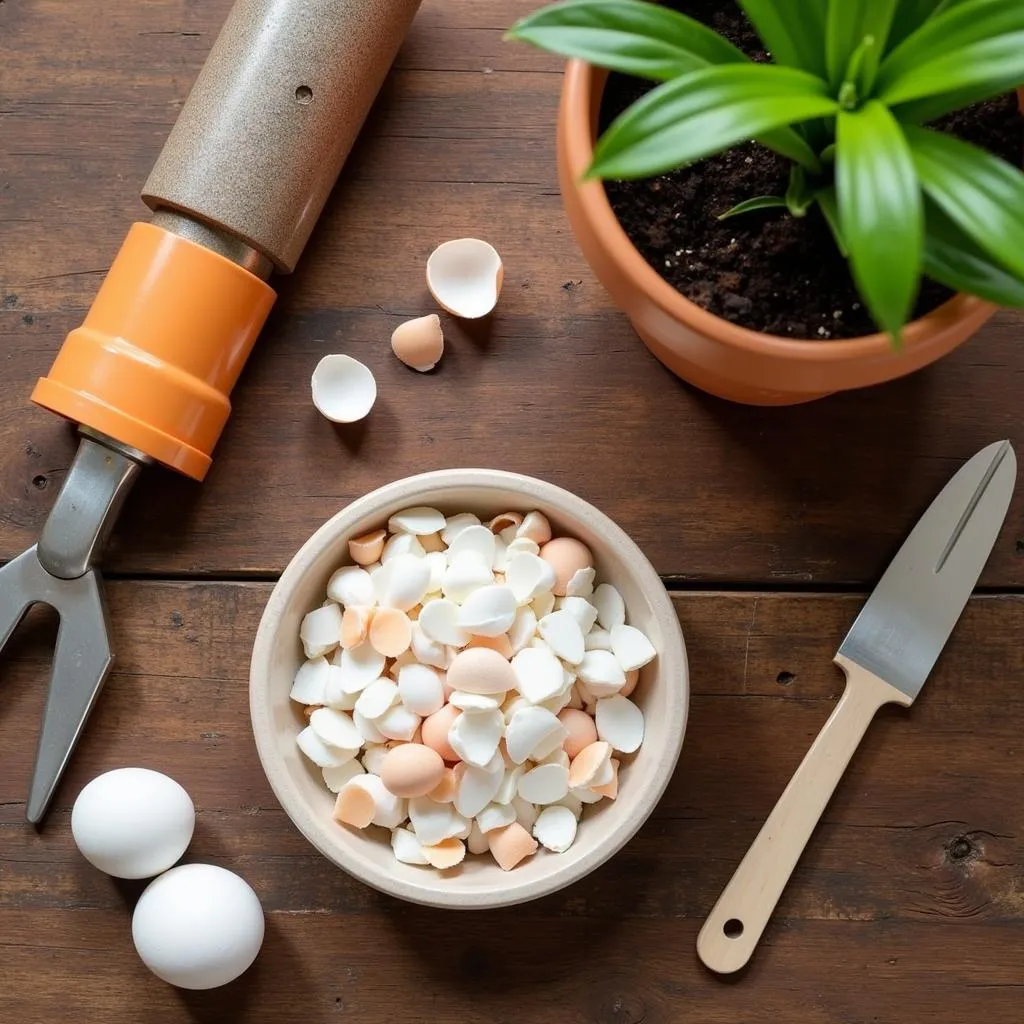Creating your own plant food is a rewarding way to nourish your indoor garden. Not only is it cost-effective, but it also allows you to tailor the nutrients to the specific needs of your plants. This comprehensive guide will explore the benefits, methods, and recipes for making homemade plant food, empowering you to support lush, vibrant growth in your indoor oasis.
Why Choose Homemade Plant Food for Indoor Plants?
Commercial fertilizers can be convenient, but crafting your own plant food offers unique advantages:
- Cost-Effective: Using readily available kitchen scraps and natural ingredients saves you money compared to purchasing commercial fertilizers.
- Control Over Ingredients: You control the quality and type of nutrients, ensuring your plants receive organic and healthy nourishment.
- Reduced Environmental Impact: Homemade plant food reduces reliance on commercially produced fertilizers, which can have a significant environmental footprint.
- Gentle on Plants: Homemade solutions tend to be gentler on plant roots compared to some synthetic fertilizers, minimizing the risk of root burn.
Understanding the Basics of Plant Nutrition
Before diving into recipes, it’s essential to understand the basic nutrients plants need:
- Nitrogen (N): Promotes leafy green growth and is crucial for chlorophyll production.
- Phosphorus (P): Supports root development, flowering, and fruit production.
- Potassium (K): Enhances overall plant health, disease resistance, and water regulation.
Popular Homemade Plant Food Recipes
Banana Peel Tea: A Potassium Boost
 Banana Peel Tea for Indoor Plants
Banana Peel Tea for Indoor Plants
Banana peels are rich in potassium, making them an excellent homemade fertilizer for flowering and fruiting plants. Simply:
- Chop two to three banana peels into small pieces.
- Place the peels in a gallon of water and let them steep for two to three days.
- Strain the liquid and use it to water your plants.
Pro Tip: Dry the banana peels and grind them into a powder for a long-lasting potassium-rich fertilizer.
Eggshells: A Calcium Powerhouse
 Crushed Eggshells as Plant Fertilizer
Crushed Eggshells as Plant Fertilizer
Eggshells are abundant in calcium, which strengthens cell walls and prevents blossom-end rot in plants like tomatoes and peppers. To use:
- Rinse and dry eggshells thoroughly.
- Crush them into small pieces or grind them into a fine powder using a blender or food processor.
- Sprinkle a tablespoon of crushed eggshells around the base of your plants and gently work them into the soil.
Expert Insight:
“Calcium deficiency can manifest as stunted growth, leaf curling, or blossom-end rot,” says Emily Carter, a seasoned horticulturist. “Adding eggshells to your potting mix provides a slow-release source of calcium, promoting healthy plant development.”
Coffee Grounds: A Nitrogen-Rich Treat
Coffee grounds are a popular choice for acid-loving plants like ferns, azaleas, and hydrangeas. They are rich in nitrogen and can help improve soil drainage and aeration. To use:
- Collect used coffee grounds and let them dry completely.
- Sprinkle a thin layer of coffee grounds around the base of your plants, avoiding direct contact with the stems.
Caution: Limit the use of coffee grounds as excessive amounts can acidify the soil over time.
Epsom Salt Soak: A Magnesium Boost
Epsom salt, despite its name, is not salt but a compound of magnesium and sulfate. It can be beneficial for plants, especially those showing signs of magnesium deficiency, such as yellowing leaves. To use:
- Dissolve one tablespoon of Epsom salt in a gallon of water.
- Water your plants with the solution once a month.
Note: Conduct a soil test to determine if your plants require additional magnesium.
Tips for Success
- Gradual Introduction: When using homemade plant food, start with a diluted solution and gradually increase the concentration to avoid overwhelming your plants.
- Observation is Key: Pay close attention to your plants’ response to the homemade fertilizer. If you notice any adverse effects, discontinue use or dilute the solution further.
- Rotation is Recommended: Avoid using the same type of homemade fertilizer repeatedly. Rotate different recipes to provide a balanced nutrient profile.
Conclusion
Making your own plant food for indoor plants is a rewarding and sustainable way to nurture your leafy companions. By understanding the basic principles of plant nutrition and utilizing readily available ingredients, you can create nutrient-rich solutions tailored to your plants’ specific needs. Remember to start slowly, observe your plants’ responses, and rotate recipes for optimal results. Happy growing!
FAQs about Homemade Plant Food for Indoor Plants
Can I use tap water to make homemade plant food?
While tap water is generally safe, it may contain chlorine and minerals that can build up in the soil over time. Consider using filtered water or letting tap water sit out overnight to allow chlorine to evaporate.
How often should I fertilize my indoor plants with homemade plant food?
The frequency of fertilization depends on the type of plant, its growth stage, and the season. As a general rule, fertilize every two to four weeks during the growing season (spring and summer) and reduce or stop fertilization during the dormant period (fall and winter).
Can I use too much homemade plant food?
Yes, it’s possible to overfertilize plants with homemade solutions. Excessive fertilization can lead to nutrient burn, characterized by wilting, leaf discoloration, and stunted growth.
What should I do if I notice signs of overfertilization?
If you suspect overfertilization, immediately flush the soil with plenty of water to leach out excess nutrients.
Where can I learn more about specific plant care requirements?
For information on specific plant care needs, consult reputable online resources or your local nursery.
Need Help with Your Indoor Garden?
For personalized advice and support with your indoor plant journey, contact Mina Cones Food at Phone Number: 02437655121, Email: minacones@gmail.com Or visit us at: 3PGH+8R9, ĐT70A, thôn Trung, Bắc Từ Liêm, Hà Nội, Việt Nam. Our dedicated team is available 24/7 to assist you.